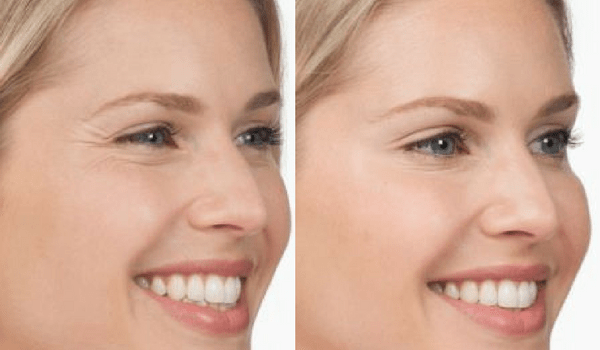You may be wondering, how does Botox® work? Many people often hear about Botox® treatments in the news when the latest Hollywood celebrity recently had the procedure done. However, many of people other than celebrities receive Botox® treatments. In fact, Botox® is the most popular non-surgical cosmetic treatment, with over 6.7 million procedures administered each year.
For starters, you should understand what Botox® is. Botox® is made from a neurotoxin called botulinum toxin that is produced by the bacterium Clostridium botulinum. More simply put, it contains tiny amounts of a highly purified botulinum toxin type A protein.
Most people know Botox® for its cosmetic use of reducing wrinkles. Botox® Cosmetic is type of medication known as a neuromodulator. It is an injectable treatment that is used to improve the appearance of lines and wrinkles by relaxing muscle movement. However, beyond aesthetic applications, Botox® is used to treat a variety of other medical and muscular conditions. Botox® can be an effective treatment option for those who suffer from extreme sweating, migraines, muscle spasms, tremors, etc. Botulinum toxin has proven to be a successful and valuable therapeutic protein.
How does Botox® work?
So, how does Botox® work? Botox®, or botulinum toxin, can be injected into humans in very small concentrations. It works by preventing signals from the nerve cells reaching muscles, therefore relaxing them. In order for muscles to contract, nerves release a chemical messenger, acetylcholine, which is a neurotransmitter. This is released at the junction where the nerve endings meet muscle cells. Acetylcholine attaches to receptors on the muscle cells and causes the muscle cells to contract or shorten.
An injection of botulinum toxin type A protein, Botox®, prevents the release of acetylcholine, preventing the muscle cells from contracting. Botulinum toxin causes a reduction in normal muscle contraction, allowing the muscles to become less stiff, or the wrinkles to relax and soften. Again, simply put, when injected into specific areas of the face, Botox® softens muscle movements that over time cause lines and wrinkles. This leaves you with a more youthful appearance.
Why does Botox® take 2 weeks to work?
Botox® results are not immediate because it takes time for the body to start reacting to the injections. As a neuromodulator, it relaxes and softens the muscle movements that cause lines and wrinkles, which may require anywhere from 3 to 5 days to see improvements and normally 10 days to see full results. Reduction of fine lines will happen after a single procedure.
How long does Botox® last the first time?
After the first Botox® treatment, results generally last between 3 to 4 months. Since the treatment slows and relaxes muscle movement, at this time the muscle movement will gradually begin to return. This is when the wrinkles, lines, or sweat slowed from Botox® may slowly begin to appear. Keep in mind that deeper, etched-in wrinkles may take a longer time or multiple treatments to obtain maximum results. However, after repeated Botox® treatments, the muscles are more trained to relax, and lines and wrinkles will become less severe over longer periods of time.
What does Botox® feel like when it starts to work?
As Botox® begins to work, you may feel tightness or a “heavy” sensation in the treatment areas. This feeling will eventually fade within 1 to 2 weeks. Since the injection causes muscle movements to relax and slow, you may also notice a difference in your range of expressions near the treatment areas or how your face responds when you lift your eyebrows. You should also see a noticeable difference in the appearance of lines and wrinkles. However, as the treatment wears off after 3 to 4 months, you will begin to notice a gradual increase in muscle movement.
What is Botox® used for?
Botox® Cosmetic is FDA-approved and most commonly requested for use in frown lines between the eyes, the forehead, and crow’s feet lines. It is also commonly used to improve the down-turned corners of the mouth, a gummy smile, and neck bands. Botox® can also be used for hyperhidrosis, or excessive sweating unrelated to body temperature or exercise.
Can Botox® lift your eyebrows?
Yes, Botox® can be used to “lift” your eyebrows. A Botox® brow lift involves injecting the treatment directly between the brows so the muscles underneath can relax. This allows the upper forehead muscles to “pull” the eyebrows back up, which allows the skin to smooth out in that area. In addition, Botox® injections at the end of the eyebrows can help provide an additional “lift” in the forehead area.
Botox® treatments in our office
Our Botox® treatments are designed to create a naturally youthful version of you. At Vujevich Dermatology Associates, our treatments are performed by one of our physicians or our highly trained nurse practitioner, Lisa Barba, CRNP.
In addition to Botox® treatment, we also specialize in other common cosmetic dermatology treatments, which you can review on our Cosmetic Dermatology page.
Vujevich Dermatology Associates offers medical, surgical, and cosmetic dermatology from some of the most highly trained physicians and clinicians in the greater Pittsburgh area. You can reach our team at 412-429-2570 or visit our contact page to see our locations in Mt. Lebanon and Washington. You can also follow us on Facebook.

